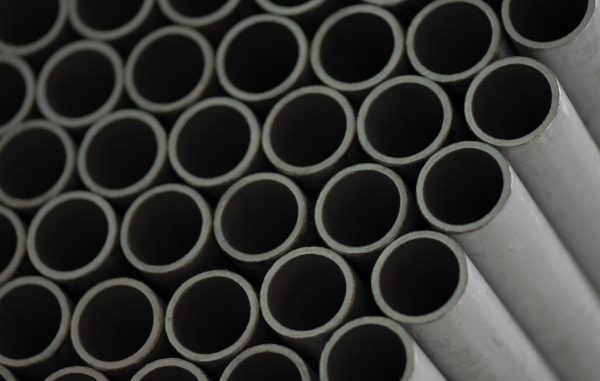
Resistance of stainless steel to corrosion results first and foremost from an alloying metal composing stainless steel, i.e. chromium (Cr). Chromium forms chromium oxide on the steel surface. Therefore it contributes to the fact that steel in contact with water or humid air does not corrode. Even small amount of Cr (from 10.5%) initiates passivation reaction on steel surface. However, if the chromium oxide layer is mechanically or chemically damaged, steel loses its resistance to corrosion attack at this spot. This layer is restored automatically provided that there is an access to oxygen from environment.
The higher chromium content in steel, the better resistance to corrosion. This resistance is additionally increases upon addition of molybdenum.
Stainless steel may corrode!
Iron is an enemy of stainless steel. When in contact with steel, one must observe basic principles in order to provide its “rustproof” properties:
– when machining stainless steel, do not use the same tools used for machining black steel
– avoid contact of black steel with stainless steel – especially during transport, storage, installation (stainless steel elements must be installed using screws, rivets, etc., also made of stainless steel).
Steel stains may also occur:
– when improper stainless steel grade is used, unsuitable for operation under special conditions e.g. in contaminated urban air, salt solutions, etc.
– when residues of chlorine containing cleaning products are left on a surface of material,
– in case of wrong structure design (cavities, gaps, pockets, etc.).
One must remember that stainless steel requires special attention during selection, machining and storage. When properly operated and maintained, it is a perfect material for various applications and provides long-term, faultless operation of elements made of it.
Removal of contamination and stains appearing on stainless steel surface:
Rust stains: in order to remove them, moisten the surface with oxalic acid solution and leave it for ca. 15 – 20 minutes, then wash with mild detergent. Flushed such surface with cold water and wipe dry.
Paint contamination should be removed with a paint thinner and soft brush, e.g. nylon.
Flush with clean, cold water and wipe dry.
Scratches on ground or brushed surface must be removed using polishing wheel and by rubbing towards surface structure (use polishing material without iron), then flushed with mild cleaning detergent. Flush with clean, cold water and wipe dry.
One must mention that this method cannot be used on surfaces finished to 2B, 2D finish and on decorative surfaces.
Finger prints are removed using spirit, thinner, trichloroethylene or acetone.
Flush with clean, cold water and wipe dry.
Oil and grease stains are removed with organic thinner, as mentioned above, then with lukewarm water with soap or mild detergent. Flush with clean, cold water and wipe dry.
Stains and discolouring difficult to remove should be cleaned with mild cleaning detergent, rubbing towards visible surface structure.
Flush with clean, cold water and wipe dry.
Or:
clean with 10% orthophosphoric acid solution. Flush with ammonia solution, then with clean cold water and wipe dry.
Temperature tarnish, severe discolouring should be removed with mild cleaning detergent or by rubbing with rough scourer (Scotchbrite) towards visible surface structure.
Flush with cold water and wipe dry.
Apply safety at work regulations when using the aforementioned methods.
- Use orthophosphoric and oxalic acid or etching paste only when other methods failed.
- Wear rubber gloves and protective glasses and observe safety regulations concerning this type of works.
- When using solvents ensure good ventilation and pay attention to fire hazard.















